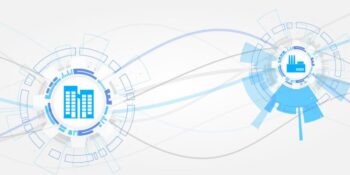e-Procurement Software Solutions
E-Procurement
Tradeshift’s e-procurement system helps you shift your procurement strategy to a cloud-based online software platform. Our E-Procurement network makes purchasing easy, granting buyers access to a wide range of suppliers for products and services.

E-procurement made smarter
Embrace a collaborative B2B Marketplace and accelerate your procurement processes like never before. Place fewer restraints on your business while avoiding a loss of control over cost and risk.
You may also be interested in…
Transforming procurement with B2B marketplaces
I recently sat down with Gonzague De Thieulloy, Global Offering Leader, Source to Pay, at IBM, to talk about the challenges of traditional source-to-pay processes and the benefits of adopting a marketplace approach.
The pillars of procure to pay: Part 1– spend under management
These “Pillars of P2P” help us visualize the necessary components to support a global procure-to-pay platform.
Using e-procurement to overcome 5 common challenges businesses face with their AP process
We break down the five main troubles that AP professionals face with their manual processes and how e-procurement tools can help to patch up the gaps in your existing strategies.
E-procurement - FAQs
E-procurement, or electronic procurement, is the process of an organization securing goods and services they need to function via an online procurement platform or marketplace. E-procurement actively works to reduce the manual effort of procurement teams and connects buyers and sellers on a single digital platform.
E-procurement works swiftly compared to traditional procurement because it leverages an online platform, as opposed to regular procurement, which is the procurement of goods and services through more manual functions.
An e-procurement software system or solution, assists organizations through the steps of finding, sourcing, ordering, and purchasing services and goods with tools online via a cloud-based platform.
There are 5 recognized steps of e-procurement, lightly based around the same tenets of procurement with the addition of online features, these include:
- Online information transferring, or when you are able to quickly and securely share documents, data, or otherwise valuable information on an online platform
- Online sourcing, or e-sourcing is the act of finding vendors via the Internet and essentially creating a shortlist of vendors an organization wants to work with.
- Online tendering, also known as e-tendering, is naturally the next step in this process, where an organization requests information from their now filtered list of potential vendors.
- Online auctioning, or an e-auction, gives vendors the ability to competitively bid for the purchaser’s trade online
- Online product ordering is the final step in this process, where a vendor has been chosen, requisitions are made and approved, the organization places their orders, and then receives their goods.
There are a few different types of e-procurement platforms you can choose from. The categories include:
- Enterprise resource planning (ERP) systems are platforms that intend to centralize, streamline, and integrate various business functions that can include HR, accounting, sales, etc.
- Electronic data interchange (EDI) software, this software is lauded as one of the most impactful technologies used in the supply chain and serves to securely and quickly share valuable data and information via a paperless process.
- Procurement software. Simple enough, procurement software is a series of tools that allow organizations to organize, automate, and modernize functions like sourcing, purchasing, and approvals in the procurement cycle.
In addition to more clarity and flexibility, the benefits of an e-procurement marketplace extend to reduced errors, strengthened security, more insight into spending, reduced or eliminated paperwork altogether, and a faster process overall.
The advantages of adopting e-procurement include higher visibility, streamlined transaction processes, and increased productivity. Disadvantages may include challenges in user adoption, a potential lack of buy-in from executives, and supplier integration. However, these challenges can be overcome by preparing your team for the transition to e-procurement as much as possible. You can achieve this by creating an implementation plan grounded in strategy and crafting contingency plans for common issues that may arise.
Implementing the e-procurement process is simpler than one may think. Once your organization’s needs for e-procurement have been established and analyzed, businesses can better pinpoint which e-procurement software would be the best fit, secure executive buy-in, and implement the new system. Transition to the new software will accelerate as your team sees the overall benefits of using e-procurement.
The seven principles of public procurement are:
- Transparency: Transparency in procurement refers to the availability of information for all stakeholders, including buyers and sellers. However, some information may not always be permissible, even under the expectation of transparency, like proprietary information.
- Integrity: In public procurement, integrity is needed in both the procurement process itself and among the stakeholders. Integrity, in this context, is the amount of trust or reliance stakeholders can have in the procurement process and those facilitating it.
- Economy: In terms of public procurement, is the ability to function as efficiently as possible with the best utilization of resources.
- Openness: In contrast to transparency, openness refers to the ability to request and receive information from actors within the supply chain.
- Fairness: Fairness in procurement is upholding equality for all parties involved and the absence of favoritism within social and economic relations.
- Competition: Competition, similar to fairness, is an assurance that all participating in the procurement process have equal opportunity and access among vendors. Essentially, with competition in procurement, any vendor making a similar bid would be equally considered.
- Availability: Vendor availability is the responsiveness of vendors/suppliers when problems arise or in case of emergency.
Our in-house experts recommend that before you transition to e-procurement, you should identify your business needs, then shortlist several e-procurement platforms that meet your requirements, get approval from your team, and then create a plan to start learning and using the platform chosen.










